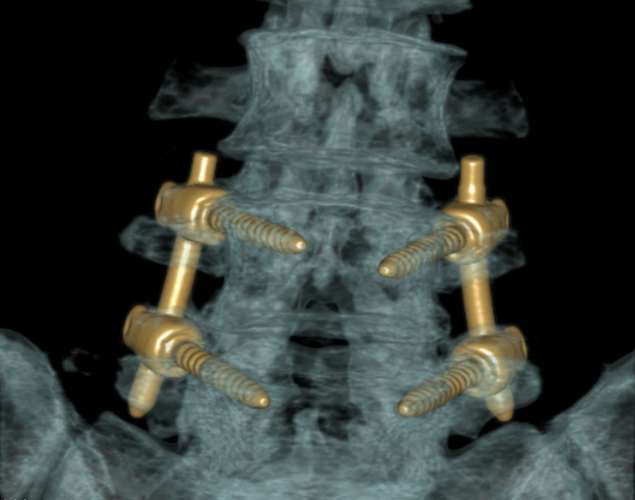

Lumbar Spinal Fusion
Lumbar Spinal Fusion with Posterior Lumbar Interbody Fusion (PLIF)
A lumbar spinal fusion with posterior lumbar interbody fusion (PLIF) is a surgery to stabilize the lower spine. It is done to relieve pain and nerve pressure caused by conditions like degenerative disc disease, spinal instability, or a herniated disc.
What Does It Involve?
The procedure is performed from the back (posterior approach) under general anesthesia. A/Prof Papantoniou:
1. Removes the damaged disc between two vertebrae.
2. Inserts a titanium spacer and bone graft in the empty space to help the bones grow together.
3. Secures the spine using screws and rods to hold everything in place while it heals.
Why Is It Done?
This surgery is recommended when:
• Back pain and leg pain do not improve with non-surgical treatments.
• The spine is unstable due to injury or wear and tear.
Recovery & Outcome
• A/Prof Papantoniou uses an advanced pain relief technique he developed in 2007 to get patients walking a few hours after the surgery, and most patients go home the next morning.
• Walking starts within 4 hours after the surgery, but full recovery takes about 12 months.
• Physiotherapy helps restore strength and movement.
PLIF provides long-term pain relief and stability, but maintaining good posture, exercise, and weight control are important for long-term spine health.